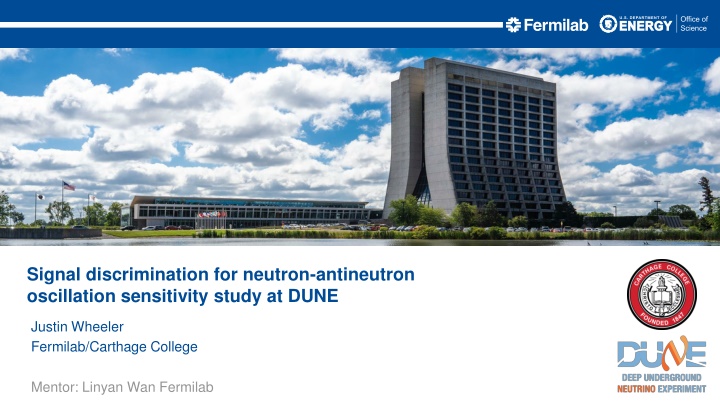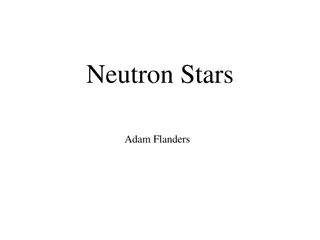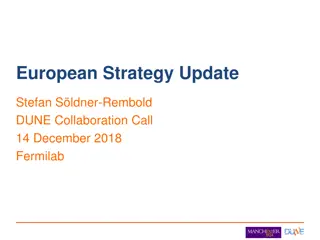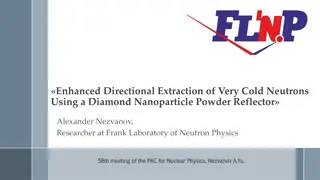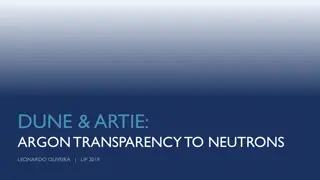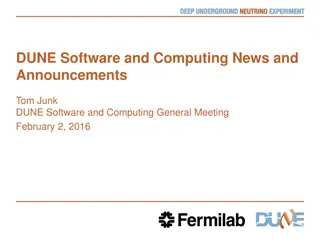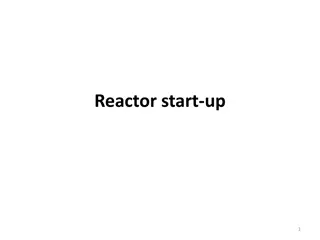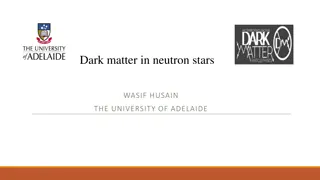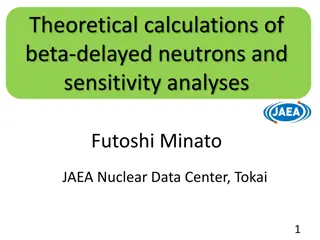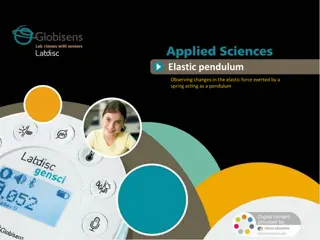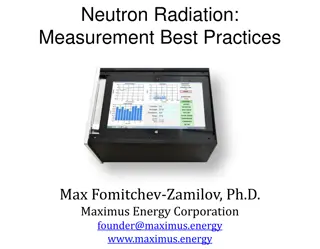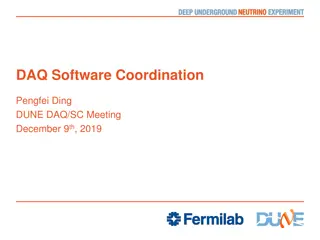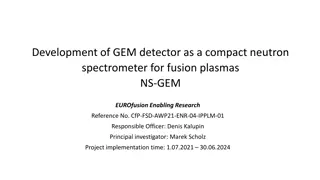Neutron-Antineutron Oscillation Sensitivity Study at DUNE
The study at DUNE focuses on discriminating signals for neutron-antineutron oscillation sensitivity, aiming to measure CP violation and explore BSM physics. DUNE uses a Liquid Argon Time Projection Chamber to search for antineutron annihilation in nuclei, branching ratios, and interaction products such as pions. Background signals like atmospheric neutrinos pose challenges, but constructing feature variables helps differentiate potential signal events.
Download Presentation

Please find below an Image/Link to download the presentation.
The content on the website is provided AS IS for your information and personal use only. It may not be sold, licensed, or shared on other websites without obtaining consent from the author.If you encounter any issues during the download, it is possible that the publisher has removed the file from their server.
You are allowed to download the files provided on this website for personal or commercial use, subject to the condition that they are used lawfully. All files are the property of their respective owners.
The content on the website is provided AS IS for your information and personal use only. It may not be sold, licensed, or shared on other websites without obtaining consent from the author.
E N D
Presentation Transcript
Signal discrimination for neutron-antineutron oscillation sensitivity study at DUNE Justin Wheeler Fermilab/Carthage College Mentor: Linyan Wan Fermilab
DUNE overview Liquid Argon Time Projection Chamber (LArTPC) Goals: Measure ? oscillation parameters, especially CP violation BSM physics (Neutron-antineutron oscillation) DUNE as a ? detector: ??beam Atmospheric ? from unknown directions ? Known direction ? Atmospheric ? ? Unknown direction ? Dominant background ? ? for BNV processes ? ? Source: DUNE Collaboration 2 July 2024 Justin Wheeler | New Perspectives 2024
Neutron-antineutron oscillation (? ?) Baryon number violation ( ? = 2) Beyond Standard Model Could explain Baryon asymmetry universe DUNE searching for ? ? in Ar nuclei Place limits on ? ? lifetime Post-oscillation the antineutron annihilates with a Source: B. Dev, et al., J. Phys. G (2024) proton or neutron in the nucleus 3 July 2024 Justin Wheeler | New Perspectives 2024
Antineutron annihilation in nucleus Branching ratios: GENIE simulation ? ? ?+? 3?0 Determined by experiments investigating ?? and ?? annihilation Outcoming particles: Mostly pions (charged and neutral) Final state interactions: Affect pion kinematics Include intranuclear scattering, absorption, charge exchange, and pion production DUNE Far Detector Horizontal Drift (FDHD) Simulation 4 July 2024 Justin Wheeler | New Perspectives 2024
Background signal: atmospheric neutrinos ??+ ??40 ???+?0 Dominant background to the ? ? search Interaction products: Muons, electrons, and hadrons Generally exhibit preferential direction Identify differences between background and potential signal events Momentum and energy distributions DUNE FDHD Simulation 5 July 2024 Justin Wheeler | New Perspectives 2024
Constructing Feature Variables Compared to background we generally expect signal events to Be more isotropic Have higher multiplicity Have no long muon track 6 July 2024 Justin Wheeler | New Perspectives 2024
Multiplicity and precuts FDHD Simulation FDHD Simulation DUNE Work In Progress DUNE Work In Progress # particles > 1 Background not flux weighted Background not flux weighted Apply precut of number of reconstructed particles > 1 Signal efficiency: 96.7% Cut out 39.0% background Signal events have higher multiplicity 7 July 2024 Justin Wheeler | New Perspectives 2024
Isotropy and kinematics FDHD Simulation FDHD Simulation DUNE Work In Progress DUNE Work In Progress Background not flux weighted Background not flux weighted Signal events are more isotropic Background events have wider kinematic range Signal events have total momentum around fermi Background exhibits directionality momentum 8 July 2024 Justin Wheeler | New Perspectives 2024
Classification of Signals Check correlation between variables Optimize cuts based on sample size Optimize an estimator Final signal efficiencies can be calculated Can be applied to calculate DUNE far detector sensitivity Example decision tree 9 July 2024 Justin Wheeler | New Perspectives 2024
Summary Sensitivity of DUNE FD to ? ? oscillation in bound nuclei SK, Phys.Rev.D 103 (2021) 1, 012008 Place limits on oscillation time for neutrons Sensitivity determined by DUNE? Signal/background efficiency Detector operational time Number of available neutrons Source: Babu, et al. 10 July 2024 Justin Wheeler | New Perspectives 2024
